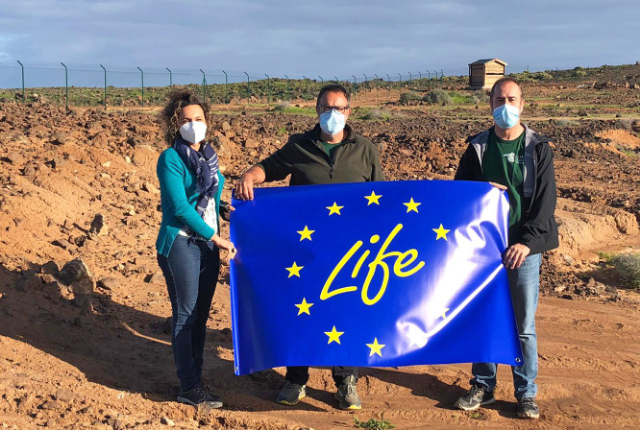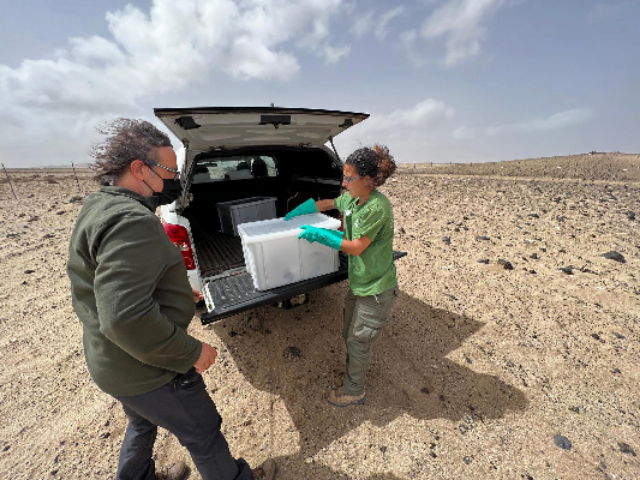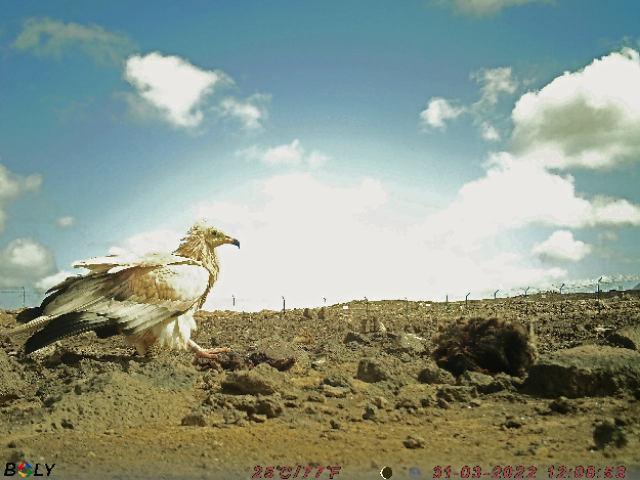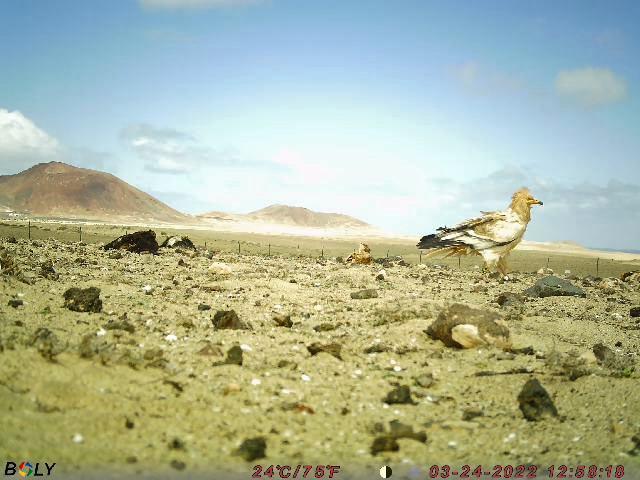From 3 March 2022, the supply of food was started in the two feeding stations that the LIFE Egyptian vulture project (action C.2) allowed to realize in Lanzarote last year.

The feeding stations are installed in the municipalities of Yaiza and Teguise, respectively in the area of Las Breñas y Soo, and are made of a perimeter fence of just under one hectare and an observatory that will allow monitoring the use of the structure by necrophagous birds and Egyptian vultures expecially.

The purpose of these feeding station is to facilitate the recolonization of the areas of the island of Lanzarote in which the species has become extinct and to reduce the mortality of young and sub-adults on this island, according to the commitments envisaged in Objective 4 of the Egyptian vulture recovery plan. (B.O.C. n. 248, of 26 December 2006).
The management of the feeding stations is carried out by GESPLAN in collaboration with the Dirección General de Cambio Climático y el Medio Ambiente, of the Consejería de Transición Ecológica, Lucha contra el Cambio Climático and Planificación Territorial del Gobierno de Canarias.
The “Winds of the Northeast” Association has provided a decisive collaboration to be able to achieve the Soó feeding station. The Association will also cooperate in monitoring its use and the potential interactions with other species living in the area, species of steppe environments above all. The supplies will be made every 15 days with limited quantities of food, about 20 kg per feeding station.
It will be used food consisting mainly of texts, skins and young goats in the Soo feeding station and in the entrails and remains of treated animals from the island slaughterhouse in the Las Breñas station. It was decided to use a different type of material to verify the response of the birds that will frequent the facilities.

At the same time, the Dirección General de Cambio Climático y el Medio Ambiente, of the Consejería de Transición Ecológica, Lucha contra el Cambio Climático y Planificación Territorial, is proceeding with the bi-weekly monitoring of supplies aimed at verifying the evolution of the populations of the various species who use the feeding stations.

The response of the birds was immediate: after the initial presence of crows (Corvus corax canariensis), thanks to the installation of camera traps, it was possible to verify the presence of the first Egyptian vulture in Las Breñas on March 15 and after that, the daily presence of a pair of Egyptian vultures that nests in the Timanfaya National Park and that has also made mating in the feeding station.

In the Soo feeding station, the presence of Egyptian vultures is less frequent and so far only one individual has been observed by camera traps on March 14, seven days after the first refueling was carried out.

